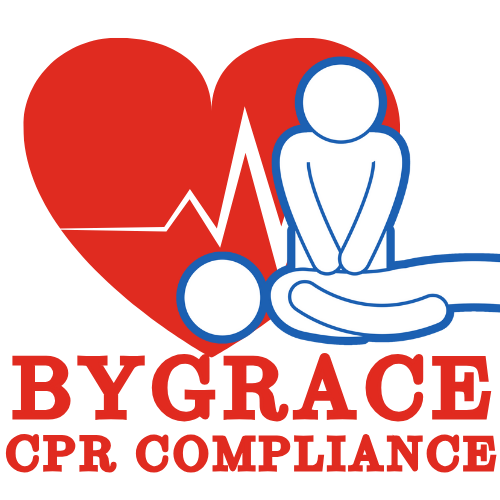
“Did you know that millions of people worldwide suffer from valve disease? It’s one of the leading causes of death in the US, and it can have a major impact on people’s lives. In this article, we’ll explain what valve disease is and why it’s important to understand it.
What is Valve Disease ?
We could define valve disease as a condition that affects the valves of the heart, which can cause problems with blood flow.
Valve disease can have a major impact on the heart’s function. When the valve doesn’t open or close properly, it can cause the heart to work harder to pump blood. This extra work can lead to problems like heart failure, arrhythmias, and even heart attacks. It can also cause blood clots to form in the heart, which can lead to a stroke.
Studies show that about 2% to 3% of adults in the US have some form of valve disease. However, the prevalence of valve disease increases with age. About 5% of people over the age of 75 have some form of valve disease. Even though it’s a common condition, many people don’t know they have it because the symptoms can be subtle and easy to dismiss. In some cases, people don’t experience any symptoms at all.
Types of Valve Diseases:
There are four main types of valve disease, aortic valve disease, mitral valve disease, tricuspid valve disease, and pulmonary valve disease.
Aortic Valve Disease
Aortic valve disease is the most common type of valve disease. It can be divided into two main categories: aortic stenosis and aortic regurgitation. Aortic stenosis is a condition in which the aortic valve becomes narrowed, making it harder for blood to flow through it. Aortic regurgitation is a condition in which the aortic valve doesn’t close properly, causing blood to flow backward through the valve.
Aortic Stenosis:
- Aortic stenosis is most commonly caused by the buildup of calcium deposits on the valve, which is known as calcification. Over time, the valve can become so narrowed that the heart has to work harder to pump blood through it. This can cause symptoms like chest pain, shortness of breath, and fainting. Aortic stenosis can be treated with medications, but in severe cases, it may require surgery to repair or replace the valve.
Aortic Regulation:
- Aortic regurgitation. In this condition, the valve doesn’t close properly, allowing blood to flow backward through it. Aortic regurgitation can be caused by a number of things, including infection, heart attack, or high blood pressure. It can also be caused by abnormalities of the valve itself, such as a birth defect. Aortic regurgitation can cause symptoms like fatigue, shortness of breath, and heart failure. Similar to aortic stenosis, aortic regurgitation can be treated with medications or surgery.
Mitral Valve Disease.
Mitral valve disease is the second most common type of valve disease. It’s caused by a problem with the mitral valve, which is located between the left atrium and left ventricle of the heart. There are two main types of mitral valve disease: mitral stenosis and mitral regurgitation.
Mitral Stenosis
- In mitral stenosis, the mitral valve becomes narrowed, which restricts the flow of blood from the left atrium to the left ventricle. This can lead to symptoms like shortness of breath, fatigue, and swelling in the legs and feet. Mitral stenosis can be caused by a variety of things, including infection, rheumatic fever, and age-related degeneration of the valve. It can be treated with medications or surgery.
Mitral Stenosis
- In mitral regurgitation, the mitral valve doesn’t close properly, allowing blood to flow backward through it. The cause of mitral regurgitation is similar to that of mitral stenosis, including infection, rheumatic fever, and age-related degeneration. It can also be caused by structural problems with the heart itself. Some people with mitral regurgitation don’t have any symptoms, while others experience symptoms like shortness of breath, fatigue, and palpitations. Mitral regurgitation can be treated with medications or surgery, similar to mitral stenosis.
Tricuspid Valve Disease
Now let’s move on to tricuspid valve disease. The tricuspid valve is located between the right atrium and right ventricle. There are two main types of tricuspid valve disease: tricuspid stenosis and tricuspid regurgitation. Tricuspid stenosis is caused by a narrowing of the valve, while tricuspid regurgitation is caused by the valve not closing properly.
Tricuspid Stenosis
- Tricuspid stenosis can be caused by a variety of things, including a congenital defect (meaning the person was born with it), a heart infection, or an underlying condition like rheumatic heart disease or endocarditis (inflammation of the inner lining of the heart). Tricuspid stenosis can cause symptoms like shortness of breath, fatigue, and swelling in the legs and abdomen.
Tricuspid Regurgitation
- Tricuspid regurgitation, also called tricuspid insufficiency, is the backward flow of blood through the tricuspid valve. This can occur when the valve’s flaps (also called leaflets) become damaged and don’t close tightly. Tricuspid regurgitation can be caused by a variety of things, including congenital heart defects, heart infection, endocarditis, high blood pressure, and other conditions that damage the heart muscle. Tricuspid regurgitation can cause symptoms like shortness of breath, swelling in the abdomen, and fatigue.
Pulmonary Valve Disease
The pulmonary valve is located between the right ventricle and the pulmonary artery. Pulmonary valve disease is less common than aortic or mitral valve disease, but it can still cause serious health problems. There are two main types of pulmonary valve disease: pulmonary valve stenosis and pulmonary valve regurgitation.
Pulmonary valve stenosis is a narrowing of the pulmonary valve that can cause symptoms like shortness of breath, fatigue, and dizziness.
Pulmonary valve regurgitation is a backward flow of blood through the pulmonary valve.
Diagnosis of Valve Disease
The diagnosis of valve disease typically begins with a physical exam and a review of the patient’s symptoms. The doctor may also order tests like an echocardiogram (a type of ultrasound), an electrocardiogram (ECG), or a chest X-ray. If valve disease is diagnosed, the doctor will determine the best course of treatment. This can include medication, surgery, or other procedures.
Treatment of Valve Disease
One of the most common treatments for valve disease is medication. Depending on the type of valve disease, the patient may be prescribed medications to help relieve symptoms or to slow the progression of the disease.
Medications may include blood thinners, diuretics, or vasodilators. Sometimes surgery is necessary to repair or replace the damaged valve.
There are three main types of surgery that can be used to treat valve disease: valve repair, valve replacement, and transcatheter valve repair.
Valve repair is a surgery that repairs the damaged valve, either by trimming, reshaping, or reconstructing it.
Valve replacement is a surgery that removes the damaged valve and replaces it with an artificial valve.
Transcatheter valve repair is a minimally invasive procedure that repairs the valve through a small incision in the groin.
Prevention Of Valve Diseases.
Let’s move on to prevention. The best way to prevent valve disease is to maintain a healthy lifestyle, including a balanced diet, regular exercise, and avoiding smoking and excessive alcohol consumption.
Additionally, it’s important to keep blood pressure and cholesterol levels in check, and to get regular medical checkups.
For people with risk factors for valve disease, such as a family history of the condition or a history of heart disease, regular monitoring by a cardiologist is especially important.
Additionally, some research has suggested that a diet high in omega-3 fatty acids, such as fish oil, may be beneficial for people with valve disease.
Challenges that People with Valve Disease face and how to manage it.
Difficulty breathing, or dyspnea, is one of the most common symptoms of valve disease. Other common challenges include fatigue, chest pain, palpitations, and dizziness. Some people with valve disease also experience anxiety and depression.
There are many ways to manage the challenges of living with valve disease. For example, breathing exercises and relaxation techniques can help with dyspnea, and exercise can help with fatigue and anxiety.
Additionally, talking to a mental health professional can be helpful for people who are experiencing anxiety or depression.
The Outlook:
“Valve disease is a serious condition that can have a major impact on your health, but there are treatments available that can help manage the condition and improve your quality of life. With the right treatment and lifestyle changes, you can live a full and active life, even with valve disease.”
Valve disease is a common condition that can cause a range of symptoms and challenges, but it can be managed with lifestyle changes, medical treatment, and mental health support. The outlook for people with valve disease is generally good, and there are many ways to live a full and healthy life with the condition.

0 Comments